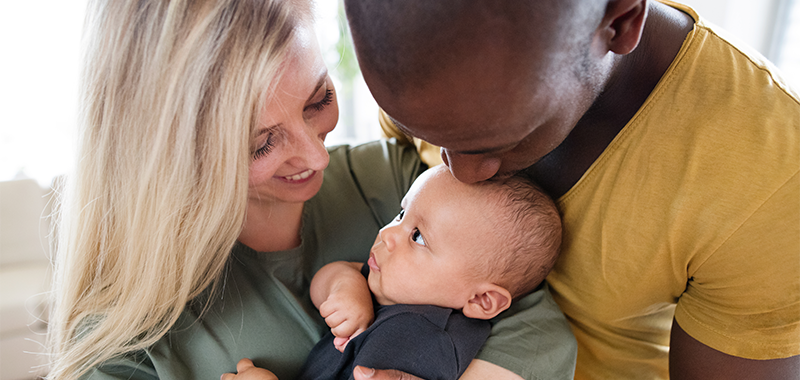
Once every 10 years, our nation undergoes the gargantuan task of “counting every one, only once, and in the right place.”
An accurate census count is critical to the federal government accurately distributing more than $800 billion in federal funds each year. Accurate counts in the census affect federal funding distributions for many public programs i, including child care subsidies and the Child and Adult Care Food Program (CACFP). They also help allocate funding more equitably for other programs children rely on like the Special Supplemental Nutrition Program for Women, Infants, and Children (WIC), the Children’s Health Insurance Program (CHIP), Medicaid, foster care, adoption assistance, Section 8 of the House Act of 1937, Low Income Home Energy Assistance Program (LIHEAP), and community health centers.
Unfortunately, in 2010, the census missed over two million children age 4 and under – or one out of every 10 young children. In fact, so many young children were missed in the last census that states collectively lost over a half a billion dollars a year ii every year for the last decade. The number of young children missed in the census has been growing steadily for 40 years. Unless we take action to reverse the chronic undercount of young children, we may miss as many as 18% of young children iii in the upcoming 2020 census.
New research iv has shown that young children are more likely to be missed in a census if:
- They live with single parents or young parents between the ages of 18-29.
- They are not the biological or adopted child of the householder.
- They live with their grandparents, aunts and uncles, or other family members.
- They live in families that do not speak English or their family includes immigrants.
- They live in families with low incomes.
- Their families rent rather than own their home.
Research also shows that many young children are left off the form when parents or household members fill it out or respond. We could count every adult and still miss many young children.
When we miss young children in the census, our communities miss out on funding for public programs for much of their childhood. This can mean anything from overcrowded classrooms to limited public funding available to help families in need of food. It also means that our families in need of child care subsidies stand even less of a chance of getting the funds they need to cover the high price of child care.
How Can You Help?
- Make yourself or your organization available to answer questions or help families fill out the online form. One reason young children are undercounted is because some adults do not realize that they are supposed to include them on their form!
- Help families access safe places with strong internet connections, like public libraries, if they do not have access to internet or do not feel comfortable responding in their home.
- Hang posters and make flyers and other resources available to families and child care providers in your community or region that explain to parents that they should count their young children. You can find family friendly resources at https://2020census.gov/en/partners/outreach-materials.html If you sign up for the campaign at countallkids.org, you will get new resources as they become available.
- Ask us to send a speaker to your state conference or regional training of people that work with young children, or to offer targeted webinars to your networks. Email Census@countallkids.org
- Download and distribute our outreach materials to families and child care providers! In December 2019 they will be available at countallkids.org.
- Create or join a local or state Complete Count Committee: census.gov/partners/complete-count.html
What is the Count All Kids Committee?
The Count All Kids Committee is working with the U.S. Census Bureau to help them improve their plans to reach out to families with young children. We support state and local advocates that want to get their states and communities to form Complete Count Committees that will work to get people to fill out the census questionnaire. We’ve conducted message research to find out why families don’t include young children on their forms, and to figure out how to persuade them to do so. We’re also developing outreach materials using that research, and disseminating those materials through Committee members and their state and local affiliates, many of which serve families with young children – like you!
Child Care Aware® of America participates on the Count All Kids Committee because we know how important it is that all children are counted on the 2020 Decennial Census. CCR&Rs are great advocates for children and families and it is critical that you are at the table when census outreach is discussed in your communities and when parents of young children have questions or concerns. Learn more at countallkids.org.
References
[i] Reamer, A. (2018). Counting for dollars 2020: The role of the Decennial Census in the Geographic Distribution of Federal funds
[iI] Stein, D. (2019). How much money did your state lose from the young child undercount in the 2010 census? Retrieved from https://countallkids.org/money-lost-from-young-child-undercount/.
[iii] Partnership for America’s Children. (2019). Census 2020: Findings based on focus groups and national online survey. Retrieved from https://funderscommittee.org/resource/recording-slides-fci-briefing-series-census-2020-messaging-testing-results/.
[iv] O’Hare, W.P., Jacobsen, L.A., Mather, M., VanOrman, A., and Pollard, K. (2019). What factors are most closely associated with the net undercount of young children in the U.S. Census? Retrieved from https://www.prb.org/wp-content/uploads/2019/03/net-undercount-children-acs.pdf.
About The Blogger
This is a partnered blog with Debbie Stein, Network Director at Partnership for America's Children. Together, Child Care Aware® of America and Partnership for America's Children hope to help all children get counted during the 2020 Census.






